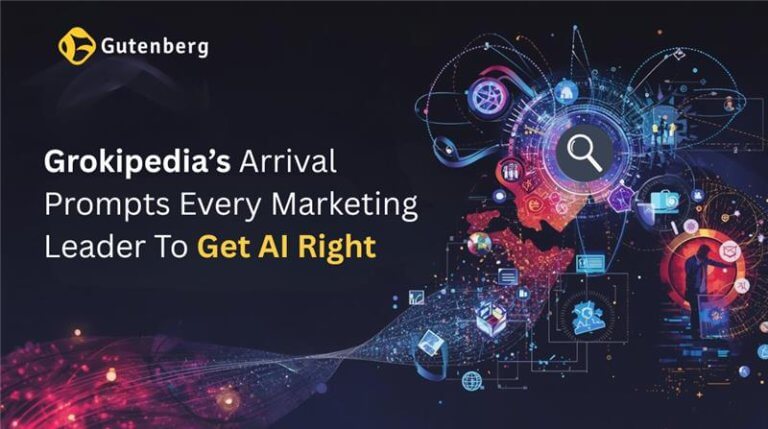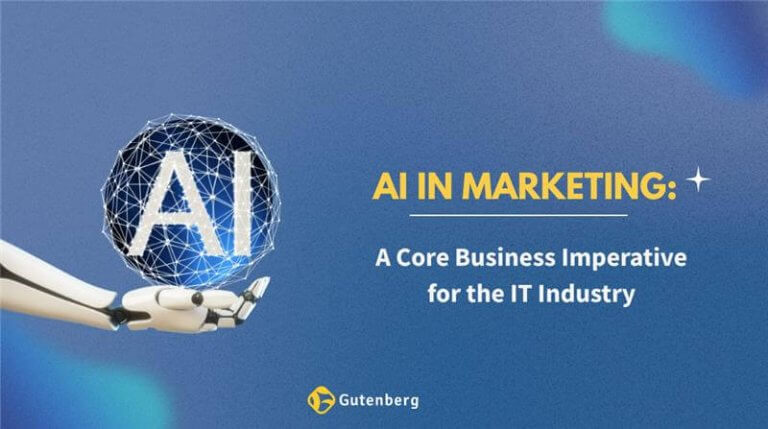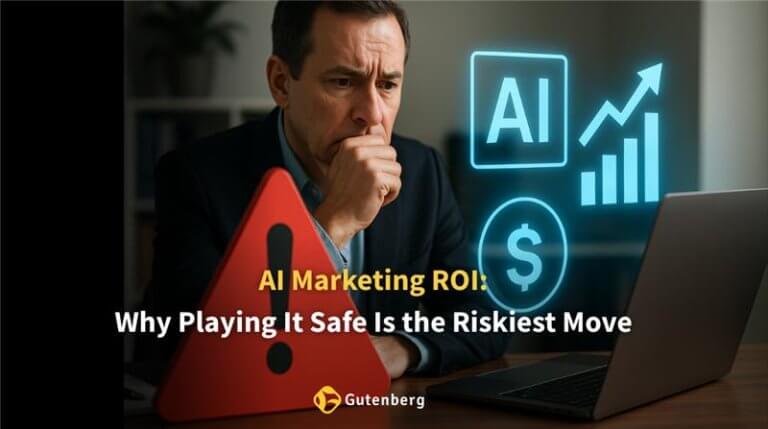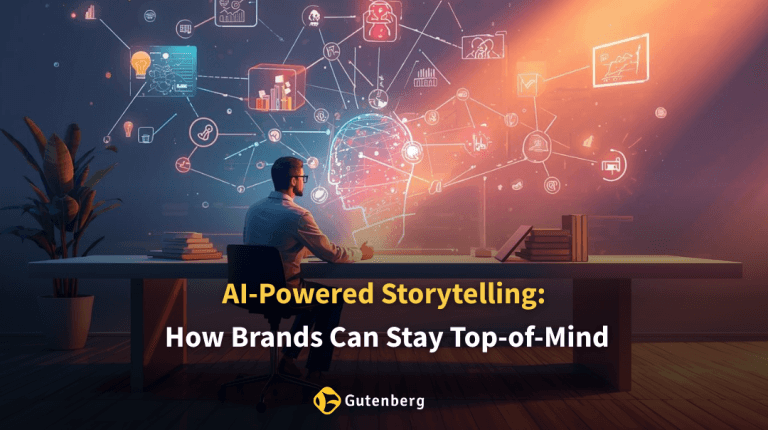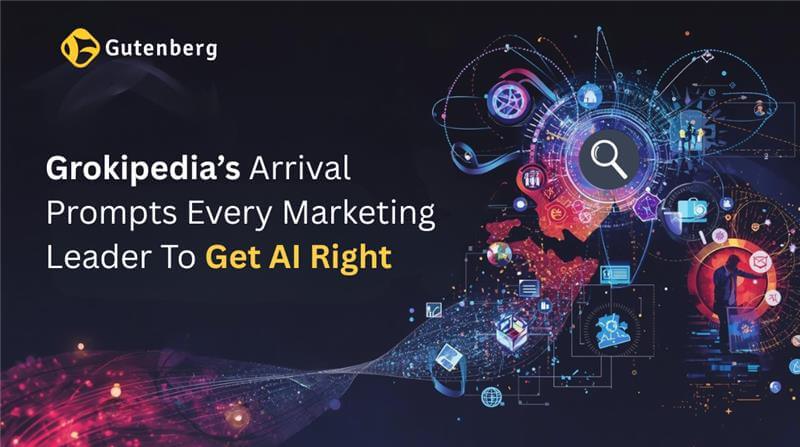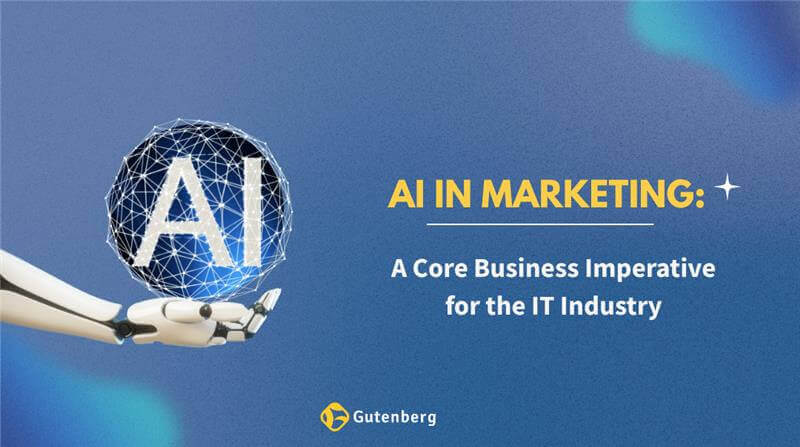Enterprise buyers aren’t just busy—they’re indifferent. Flooded with similar-sounding pitches, they’re tuning out altogether. In this blog, we explore how brand positioning in tech can help enterprise firms cut through this fatigue. We’ll look at what causes vendor fatigue, why poor positioning makes it worse, and how a well-structured B2B tech brand strategy can be the difference between being shortlisted or forgotten.
We’ll also cover how regional and mid-funnel clarity plays a role, why Generative Engine Optimization (GEO) matters, and how an agency like Gutenberg can help technology brands realign their messaging for better recall and relevance.
Understanding Vendor Fatigue in B2B Tech
Enterprise buyers today are bombarded with vendor outreach, content, and demo requests across every stage of the buying journey. Gartner reports that 75% of B2B buyers prefer a sales experience without direct interaction with a sales representative. This is a clear sign they are experiencing burnout from traditional sales efforts.
Vendor fatigue B2B occurs when decision-makers feel overwhelmed, uninspired, or unconvinced by what tech vendors are offering. It’s not always about bad products. It’s about brands sounding the same. Without clear differentiation, even the best tools fall flat in front of a buyer tired of evaluating what seems like endless choices.
Why Brand Positioning in Tech Matters More Than Ever
When the market is saturated and buyers are skeptical, brand positioning in tech becomes a necessary filter. It shapes how buyers interpret your value before they even look at your features or pricing.
Good positioning answers three unspoken questions upfront. What problem do you solve? Why does it matter right now? Why should they trust you over someone else?
The Pitfalls of Poor Enterprise Tech Branding
Most enterprise tech firms fall into one of two traps. They either focus entirely on product features or use vague, overused language that means nothing to their audience. This weakens enterprise tech branding and adds to vendor fatigue of B2B.
When multiple vendors claim to “streamline operations” or “enhance digital transformation,” buyers tune out. They’re not hearing solutions. They’re hearing noise.
- Higher bounce rates on product pages
- Disconnected messaging across sales and marketing
- Lack of recall when RFPs are being considered
This is where a focused B2B tech brand strategy can prevent confusion and build confidence.
How to Build a Strong B2B Tech Brand Strategy
An effective B2B tech brand strategy is not about saying more. It’s about saying the right things with clarity and purpose. Below are key elements that help improve positioning and reduce fatigue.
- Define the problem you solve: Lead with relevance, not features. Enterprise buyers want to know how your solution fits into their business priorities.
- Use the customer’s language: Avoid acronyms or overly technical language that only your internal team understands. Use words your audience uses in meetings, not whitepapers.
- Create consistency across all channels: Every touchpoint—from your website and emails to webinars and sales decks—should echo the same message. This is how you build familiarity and trust.
- Speak to different roles with tailored messaging: The CTO and the procurement manager care about different things. Use the same core positioning but adjust the message based on stakeholder needs.
- Build credibility with substance: Third-party validations, data, and testimonials carry more weight than adjectives. Stick to what you can prove.
The Role of GEO Optimization in Enterprise Messaging
As tech brands expand across markets, GEO optimization becomes a key differentiator. A message that resonates in North America may not land the same way in Southeast Asia or the EU.
Buyers want relevance. Not just in use cases, but in language, regulations, and market context. Tailoring your messaging to specific regions enhances the perception of your brand as a thoughtful and aligned partner.
According to a study, 76% of buyers prefer purchasing products with information in their native language. If your brand positioning in tech includes geography-aware narratives, you’re already ahead.
Mid-Funnel Clarity: Where Positioning Often Breaks Down
The top of the funnel brings in leads. But the middle is where many brands lose them. Buyers are halfway through their evaluation process, yet still unsure what makes you better.
This is often where enterprise tech branding fades or becomes inconsistent. You need structured assets—clear product overviews, focused explainer videos, and specific outcome-based content—to maintain momentum.
Well-defined mid-funnel positioning helps reduce confusion and keeps your solution in the consideration set. It’s not about adding more content. It’s about simplifying the message.
Generative Engine Optimization: Be Seen, Be Understood
With the rise of generative AI tools, buyers are increasingly relying on AI-generated insights to shortlist vendors. That’s where Generative Engine Optimization (GEO) matters.
Your messaging must be structured in a way that AI engines can easily extract, reframe, and reference. If your website, product pages, and PR content lack clarity, AI tools will struggle to accurately present your value in responses.
Structured content, consistent phrasing, and strong messaging pillars improve your chances of being included in AI summaries, sidebars, and auto-sourced insights. It’s a new SEO layer designed for machines but built for humans.
How Gutenberg Supports Brand Positioning in Tech
Gutenberg works closely with enterprise tech companies to strengthen their brand positioning in tech by simplifying complex messaging, aligning teams on consistent narratives, and building market-focused assets.
We understand the realities of vendor fatigue B2B and help tech brands reframe their story in a way that’s outcome-first, role-aware, and regionally relevant. From structured messaging frameworks to content calibrated for both search engines and generative AI, we enable brands to stay consistent across every stage of the buyer’s journey.
If you’re ready to refine your B2B tech brand strategy and be remembered for what matters, Gutenberg can help you do it with purpose and precision.
Conclusion: Brand Positioning Should Be the Starting Point
Tech firms often treat positioning as an afterthought. Something to revisit after product development or sales hiring. But today, clear brand positioning in tech is the foundation. Without it, even the best product will struggle to stand out.
Breaking through vendor fatigue, B2B requires more than tactical marketing. It requires a well-thought-out B2B tech brand strategy that speaks to people, not people. That means simplifying your message, aligning it across teams, and shaping it for both buyers and the tools they use to find you.
As buying behavior shifts and AI tools start to shape first impressions, the clarity of your brand could be the most strategic investment you make. Position early. Refine often. Say what matters. Because that’s what gets remembered.
Frequently Asked Questions
1. What is vendor fatigue in B2B tech marketing?
Vendor fatigue in B2B tech refers to a buyer’s frustration from being approached by multiple vendors offering similar solutions with little differentiation. It leads to slower decision-making, disengagement, and lower brand recall.
2. How does brand positioning help tech companies reduce vendor fatigue?
Strong brand positioning in tech helps buyers quickly understand what makes a solution different and valuable. It simplifies the decision-making process by focusing on specific outcomes and messaging clarity.
3. What makes a B2B tech brand strategy effective in a saturated market?
An effective B2B tech brand strategy highlights the problem being solved, avoids technical jargon, and maintains message consistency across channels. It also adapts to different buyer roles and regional needs for better relevance.
4. Can an agency help improve brand positioning for enterprise tech firms?
Yes. Agencies like Gutenberg specialize in helping tech companies sharpen their brand positioning in tech, refine messaging frameworks, and build content that resonates with both decision-makers and AI search tools.
5. How can I make my tech brand more discoverable in AI-generated search results?
Using Generative Engine Optimization (GEO) techniques improves discoverability by structuring your brand messaging clearly across your website and digital assets. Agencies such as Gutenberg can help build AI-friendly content frameworks that ensure your brand is referenced accurately.
Let’s sharpen your brand positioning and cut through vendor fatigue.


